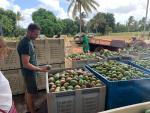In the medium to long term, the European market for dried mango is expected to show a stable volume growth of 3-4% annually. This growth is likely to be driven by changes in the consumption patterns of European consumers, including the rising demand for healthier snacking options and a decrease in the consumption of snacks containing sugar. The United Kingdom, Germany, France, the Netherlands, Switzerland and Italy offer the best opportunities for developing country suppliers.
Search
Enter search terms to find market research



